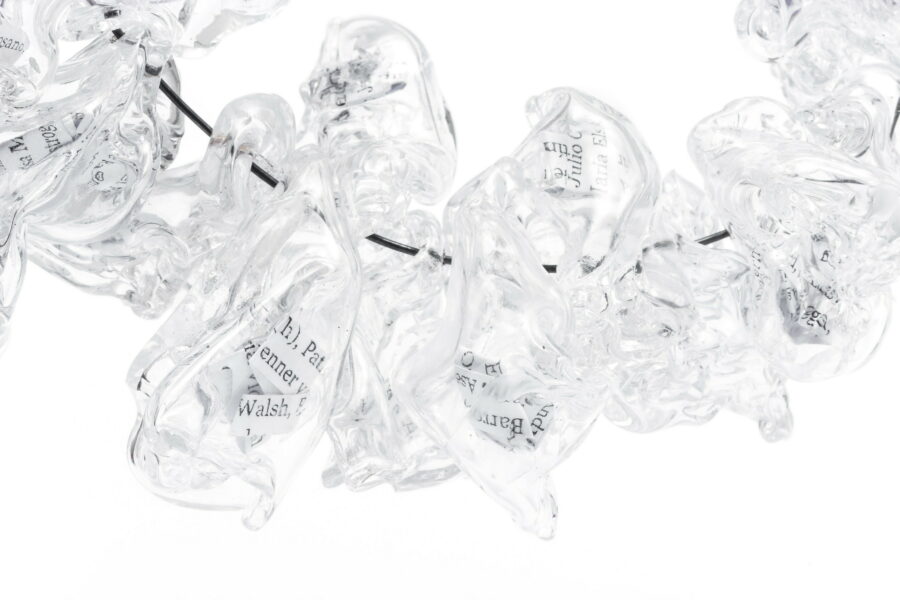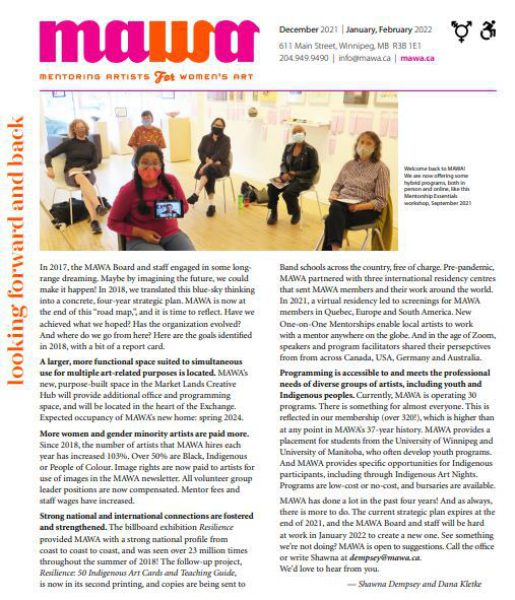
“Traditionally, jewelers have frequently attempted to pacify society, pandering to our needs with pretty, decorative designs. Jewelers no longer have to do this. They can produce stronger, more relevant work which might address the dilemmas in society and by doing so, oppose them.”[1]
The jewellery we wear communicates who we are, reflecting our desires, histories, who we love and what or where we call home. Although many see jewellery as mere decoration or adornment (and it can, quite joyously, be that, too), it is an art form. Like other contemporary artists, many jewellery artists choose to explicitly explore ideas, theories, issues and narratives through their work. They investigate politics, identity, the environment, the body, gender, and our personal and collective place in the world.
Although narrative or conceptual jewellery is a relatively contemporary term, the desire to communicate through jewellery dates back much further. Indigenous bead and quill work tells stories and passes on knowledge through generations. Victorian mourning jewellery honoured the dead and often incorporated hair of the deceased fashioned into intricate designs. As Lloyd E. Herman writes in the catalogue for Brilliant Stories: American Narrative Jewelry, “Storytelling in art, and the wearing of jewelry, are nearly as old as humankind.”[2]
In Gender and Jewelry: A Feminist Analysis, Rebecca Ross Russell writes that “Jewelry presents both a challenge and an opportunity to feminists: as a medium, it is inherently and inextricably bound up with the body and social restrictions and conceptions thereof.”[3] Ross Russell investigates the negative aspects of women’s body ornamentation as it relates to the male gaze and disenfranchisement, as well as the power of contemporary jewellery to challenge power structures and preconceived notions of gender. She writes, “Thankfully there is a small but significant contingent of jewelers actively creating work that engages with issues of gender and the gaze, whether or not they use feminist or queer theory explicitly.”[4]
Melanie Bilenker, whose work is in the collections of major institutions including The Smithsonian in D.C. and MOMA in New York, uses her own hair embedded into resin and precious metals to create intimate domestic portraits of everyday events like washing her socks or sleeping. Referring to both her subject matter and the medium of human hair, Bilenker states, “I am looking for ways to conjure a sense of home for the viewer. I see hair as proof of existence, a souvenir.” [5]
The materials used by Hebe Argentieri conceptually echo the content of her work, which investigates transformation and political and environmental crises. Her necklace made from discarded plastic, paper and silver materially reflects the impact of the military coup in her country of Argentina, where the dictatorship controlled information about massive human rights violations. She says, “Thirty thousand people were abducted, tortured and killed during this time. Among them, many writers and journalists who tried to inform and alert the people about what was going on. My necklace Voices includes the names of all these journalists and writers.”[6]
Winnipeg artist Anastasia Pindera holds a BFA from the Nova Scotia College of Art and Design, where she focussed on jewellery and metalsmithing. The body is the subject in Pindera’s contemporary jewellery, which examines gender, sexuality and Western beauty ideals and challenges social conventions. Her Menstruation Ring was carved in wax, and then it and its stones were cast in bronze. This process can be challenging, but she chose this technique because of the potential imperfections that can arise as a means to interrogate perfectionism in relation to fine jewellery and the body. Pindera offers further thoughts on the ring:
The Menstruation Ring references the cocktail ring which came into fashion during the American prohibition era of the 1920’s. In this era, women were gaining greater freedoms and equality including the ability to enter social spaces they had been excluded from like public bars and the emerging illegal cocktail parties, and most formatively gaining the right to vote. Typically, discernible by their bold/gaudy style and oversized/excessive gemstones, cocktail rings are a conversation starter. Like the cocktail ring, the Menstruation Ring is meant to make a bold statement and encourage everyday conversations on period politics to normalize the subject and encourage social change.[7]
The body is also central to Karin Jones’s work, and a series entitled (body of work) was recently shown in Uncommon Language at the Vancouver Art Gallery. A multidisciplinary artist and jeweller, Jones examines the ways in which historical narratives shape identity. She created a series of eight neckpieces based on restraints and shackles that enslaved Black people were forced to wear. In her artist statement she writes:
I am posing a complex set of questions without offering any easy answers…to what extent do we choose to display certain aspects of our identities? By creating a series of objects of adornment referencing restraints and materials used during the period of enslavement of African peoples in the Americas, I am examining my own relationship to this story. As a descendent of some of these enslaved peoples, I have grown up with the understanding that this historical narrative is an important part of who I am, or perhaps more accurately, how the world sees me.[8]
Candace Neumann is a Métis artist, student, doula, sundancer, cedar bath practitioner, community worker and facilitator in Winnipeg. She states that “Beading and creating jewellery is a way for me to process the things I do, hear, see and feel in my daily life. I mainly make jewellery that combines traditional techniques and materials with contemporary design, and materials.”[9] Her First Food Earrings: Lactating Breasts are a joyful celebration of the maternal body. Vintage glass and pipestone beads on smoked elk hide create the glands and nipples, while the breast milk is represented by tiny dangling and shimmering pearls.
As an art form that rests and moves on our bodies, jewellery can be a potent site for investigation. It is at once the most private and the most public of art forms. Jeweller Jack Cunningham writes that narrative jewellery is comprised of, “relatively speaking, small objects that have the potential to speak of large issues, make bold statements and question accepted values. Like a piece of poetry, this is the art of condensing, of distilling thoughts and ideas into a reduced visual representation.”[10]
As a jewellery artist and writer myself, this description made my heart glad. I’ve long considered jewellery to be like visual poetry. Sometimes a small package carries a big offering.
[1] Jones, Karin. https://karinjones.ca/projects...
[2] Email interview with Candace Neumann, September 22, 2021.
[3] Cunningham, Jack. (https://www.jackcunningham.co....).
[4] Patti, Sienna. https://siennapatti.com/projec...
[5] Fenn, Mark. Narrative Jewelry: Tales from the Toolbox. Atglen, PA: Schiffer Publishing Inc.: 22.
[6] Interview with Anastasia Pindera, September 8, 2021.
[7] Turner, Ralf. Jewelry in Europe and America: New Times, New Thinking. New York: Thames and Hudson, 1996: 88.
[8] Neyman, Bella. https://www.themagazineantique...
[9] Russell, Rebecca Ross.https://dl.tufts.edu/pdfviewer.... p. 133.
[10] Russell, Rebecca Ross.https://dl.tufts.edu/pdfviewer.... p. 111.

